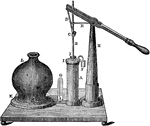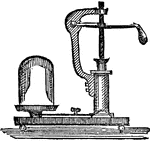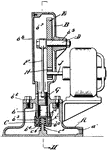Air Pumps and Fans
The Air Pumps ClipArt gallery provides 18 illustrations of pumps designed to move air for a variety of industrial and scientific purposes.
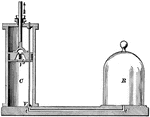
Air Pump
"The air pump is an instrument for removing air from a given space. A closed vessel R is called the…

Air Pump
"The air pump is an instrument for removing air from a given space. A closed vessel R is called the…
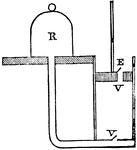
Air Pump
"The air pump is an engine by which the air can be pumped out of a vessel, or withdrawn from it. The…
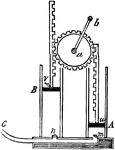
Air Pump
"The piston rods are furnished with racks, or teeth, and are worked by the toothed wheel a, which is…
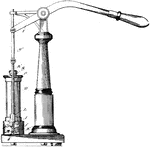
Mechanical Action Air Pump
A pump is a device used to move fluids, such as liquids or slurries, or gases. A pump displaces a volume…

Air-engine
"A motor employing the elastic force of air expanded by heat, or air compressed by means of another…
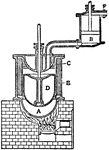
Stirling's Air Engine
"A form of air-engine which was invented in 1816 by the Rev. R. Stirling is of special interest as embodying…
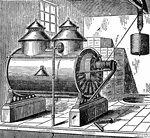
Auto-Pneumatic Apparatus
"Hearson's machine is cylindrical in form, and is surmounted by two turrets. Internally the cylinder…
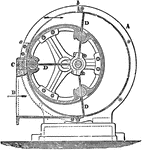
Blowing-Machine
"An American machine, introduced into England by Mr. Ellis. It consists of an iron cylindrical casing…
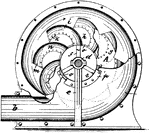
Centrifugal Blower
This blower has a drum consisting of two side plates and a series of partition plates curved in a cross…
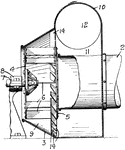
Centrifugal Fan
This fan features a hamster type wheel in the middle for moving air or gases. It has a fan wheel with…
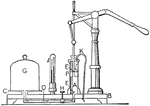
Air Pump
"A pump for exhausting air and other gases from a closed space, or for compressing air within an enclosed…
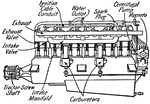
Vertical Type Motor, Six Cylinder
This illustration shows a six cylinder motor and its many parts: Intake Manifold, Centrifugal Pump,…
